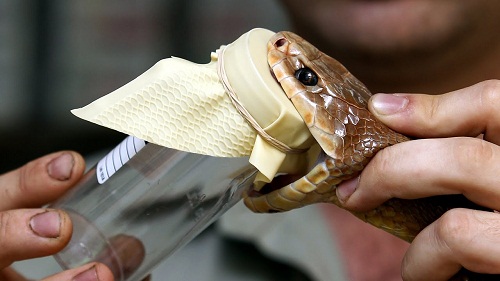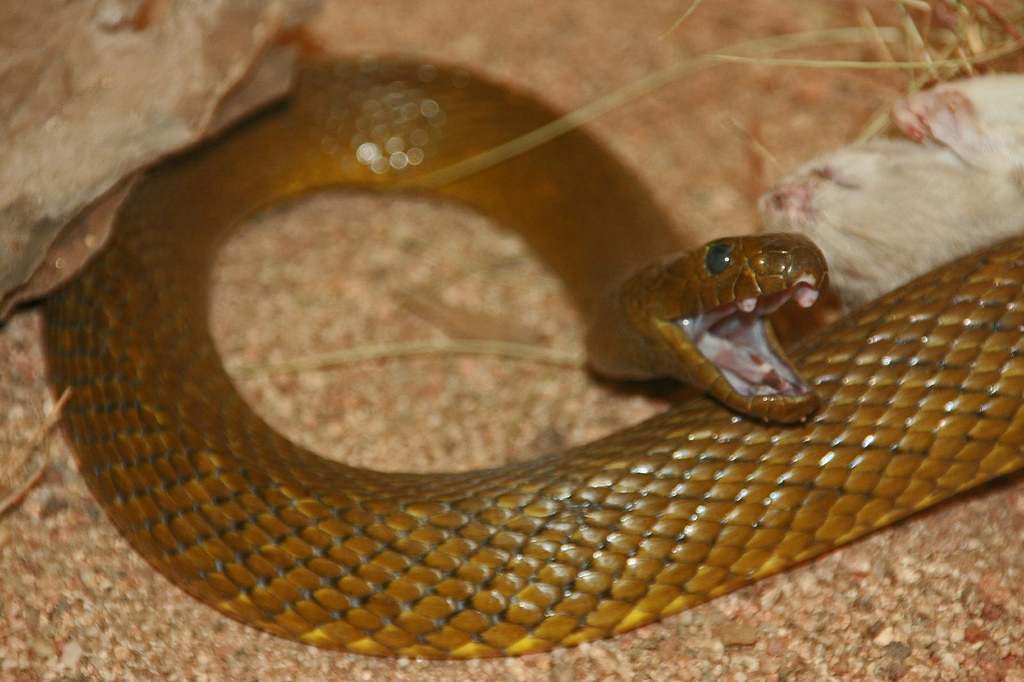

Because it lives in such remote locations, the inland taipan seldom comes in contact with people therefore it is not considered the deadliest snake in the world overall, especially in terms of disposition and human deaths per year. However, it will defend itself and strike if provoked, mishandled, or prevented from escaping. Īlthough the most venomous and a capable striker, in contrast to the coastal taipan which many experts cite as an extremely dangerous snake due to its behaviour when it encounters humans, the inland taipan is usually a quite shy and reclusive snake, with a placid disposition, and prefers to escape from trouble. It is an extremely fast and agile snake that can strike instantly with extreme accuracy, often striking multiple times in the same attack, and it envenomates in almost every case. It is estimated that one bite possesses enough lethality to kill at least 100 fully grown humans. The inland taipan is a specialist hunter of mammals, so its venom is specially adapted to kill warm-blooded species. īased on the median lethal dose value in mice, the venom of the inland taipan is by far the most toxic of any snake – much more so than even that of sea snakes – and it has the most toxic venom of any reptile when tested on human heart cell culture. It was formally described by Frederick McCoy in 1879 and then by William John Macleay in 1882, but for the next 90 years it was a mystery to the scientific community no further specimens were found, and virtually nothing was added to the knowledge of this species until its rediscovery in 1972. Aboriginal Australians living in those regions named the snake dandarabilla. The species is endemic to semi-arid regions of central east Australia. The inland taipan ( Oxyuranus microlepidotus), also commonly known as the western taipan, the small-scaled snake or the fierce snake, is a species of extremely venomous snake in the family Elapidae. Pseudechis microlepidotus / Pseudechis ferox.The current, documented range of the species is more limited.

So the impressive figure of 250,000 mice per bite is misleading, reflective more of “laboratory reality” than evolutionary reality.General range of inland taipan (in red). The hapless laboratory mice used in toxicity testing are evolutionarily naïve and may be much more sensitive to the venom. Inland taipans are also engaged in a co-evolutionary arms race with their natural prey, which may over time have evolved some resistance to the snake’s venom. Living in a harsh, arid environment also means they must conserve resources, so they likely deliver only a tiny fraction of the contents of their glands each time they bite a prey animal.

In nature, taipans need to kill their relatively dangerous rodent prey quickly, before it escapes or has a chance to retaliate. The fact that inland taipans specialise on rodents may partly explain their extreme toxicity to lab mice, but there’s probably more to it that that. Why then is the inland taipan so toxic when it targets solely rodents? The precise answer to this question awaits further research, although it is possible to indulge in thought experiments. The evidence suggests that snakes evolve venom that is fine-tuned for the specific context in which it is used.

Stewart MacdonaldĪt the molecular level, individual toxins have been identified that are 100-fold more toxic to natural prey than to laboratory organisms such as rodents. The baby eastern brown snake ( Pseudonaja textilis) feeds exclusively on reptiles, while its parents would have had a broader diet. Some are marine specialists, while others prefer eggs. Like all elapid snakes, the common ancestor of modern Australian species would have possessed a sophisticated venom system capable of delivering a complex cocktail of toxins into potential prey animals.Įlapid snakes quickly diversified in their new environment and today Australia is home to approximately 100 terrestrial species and more than 30 marine species – more than a third of the world’s elapid snake fauna.Īustralian elapid snakes are extremely diverse in ecology and prey preference: some are general feeders that will tackle any prey, some prefer mammals, others frogs or reptiles. The family, which arrived in Australia some 10 million years ago, includes some of the world’s most famous snakes such as the cobras of Asia and Africa and the mambas of Africa. The majority of snakes in this country are members of the Elapidae family, which means they have fixed fangs at the front of their mouths, and all are venomous. In Australia there is a unique opportunity to study the evolution of snake venom. Some snakes simply rely on powerful jaws while others feed on defenceless prey such as eggs, so have no need of any additional deadly method of subjugation.


 0 kommentar(er)
0 kommentar(er)
